Is life getting better? Measures of Australia’s Progress (2013) & Progress in Australian Regions (2017)
Is life in Australia getting better? There are a range of indicators that help to answer this question. My personal interest is in how innovation, entrepreneurs, and startups contribute towards the answer.
Two approaches I came across recently include:
- Measures of Australia’s Progress Report 2013 by the Australian Bureau of Statistics; and
- Progress in Australian Regions Yearbook 2017 by the Department of Infrastructure and regional Development – Bureau of Infrastructure, Transport and Regional Economics
Measures of Australia’s Progress (MAP)
The ABS MAP report set out to answer one question:
‘Is life in Australia getting better?’
To arrive at an answer, the ABS reviewed current approaches globally and across Australia. Below is an overview from their report in 2013. A list of such reports that is maintained on an ongoing basis would be valuable.
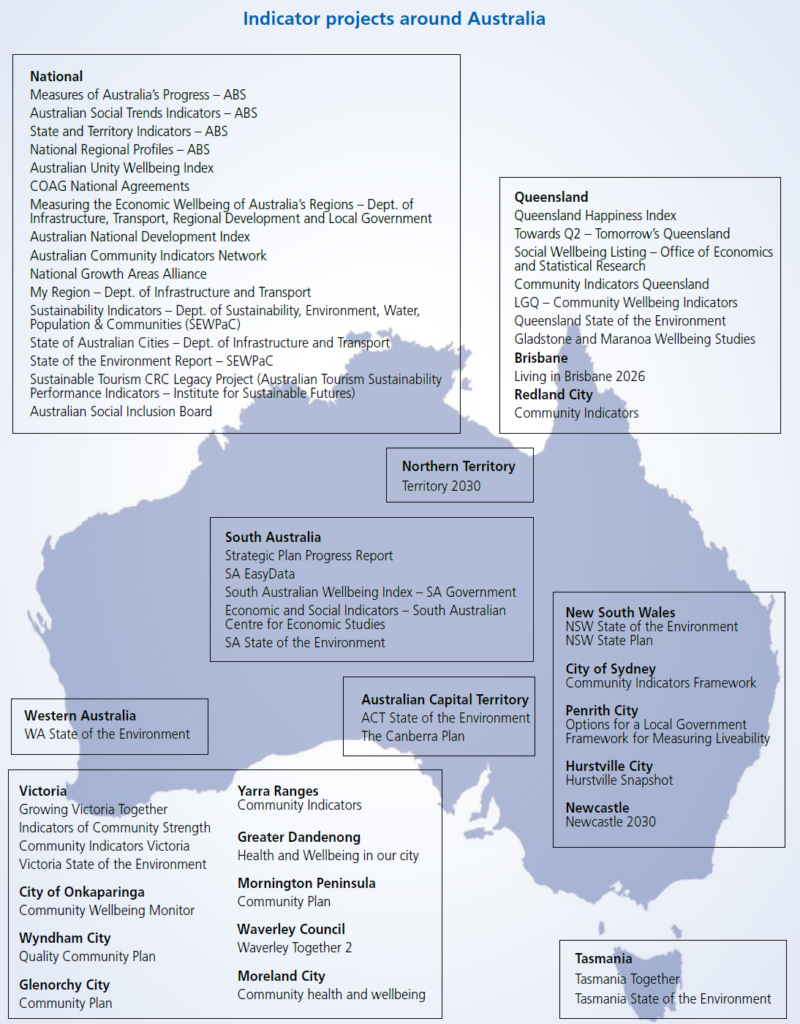
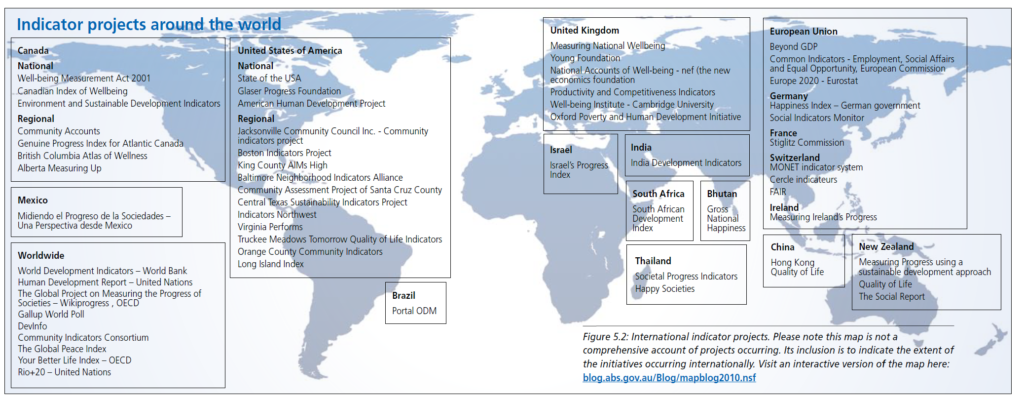
Through the review above and engagement with both everyday Australians and experts, the MAP report developed 26 themes across four domains of Society, Economy, Environment, and Governance. They then published an assessment on the extent that the indicators were: 1) showing progress; 2) showing regress, 3) had minimal change, or 4) there was a data gap.
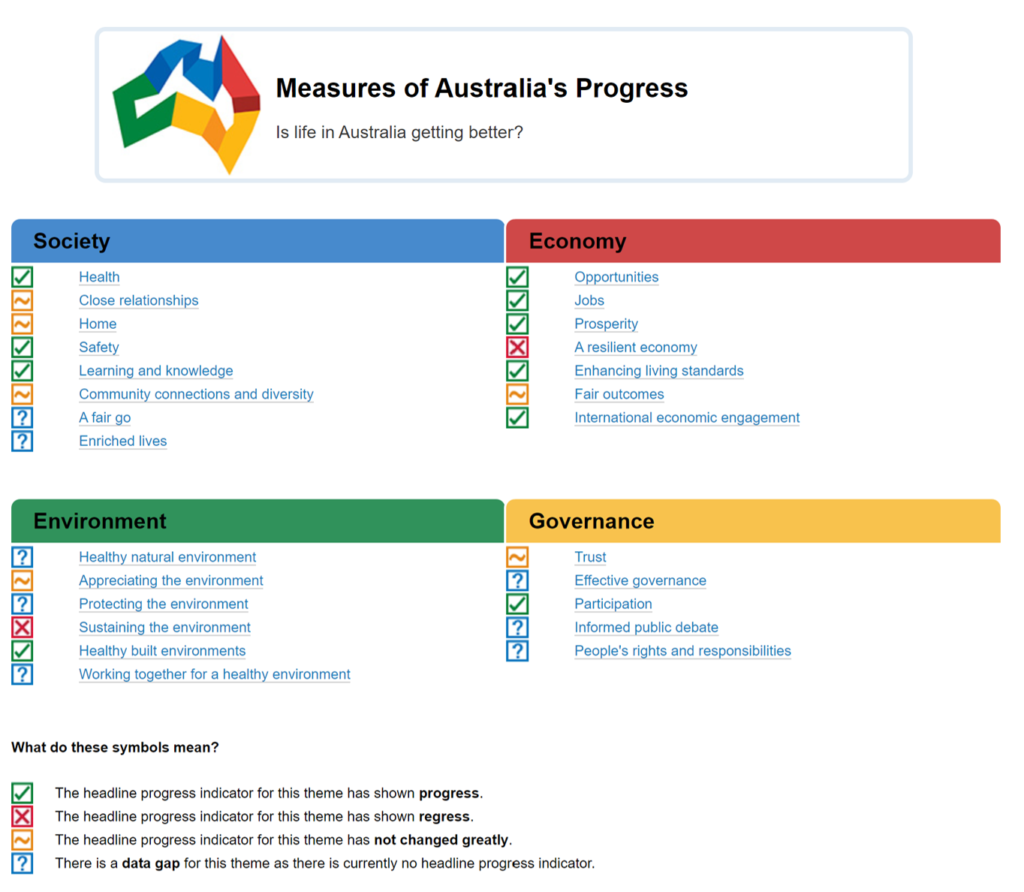
The report’s website has an interactive tool that makes it easy to understand the details. Keep in mind that the report was released in 2013 using data that is now over a decade old. There are many conversations that can be started with the data, such as: the low environmental sustainability and lack of data in the current climate awareness context; and the lack of data relating to governance and moderate levels of trust.
In regards to economic resilience, the indicators at the time reflected an overall Australian society and economic position that was positive and growing. However, the strong and growing economy was not resilient based on an assessment of multifactor productivity declining 2.1% over the decade where:
“output (i.e. goods and services) of the Australian market sector has been outpaced by growth in its inputs (i.e. capital and labour). An economy with a lower level of productivity is likely to be less capable at withstanding and recovering from economic downturns.“
Current state of Multifactor Growth
I am by no means an economist, but out of curiosity I looked at where our productivity is now. Multi factor growth is interesting as an economic reference point resilience. The latest ABS report shows that multi factor growth is on the decline and trending down at a current rate of 0.4%.
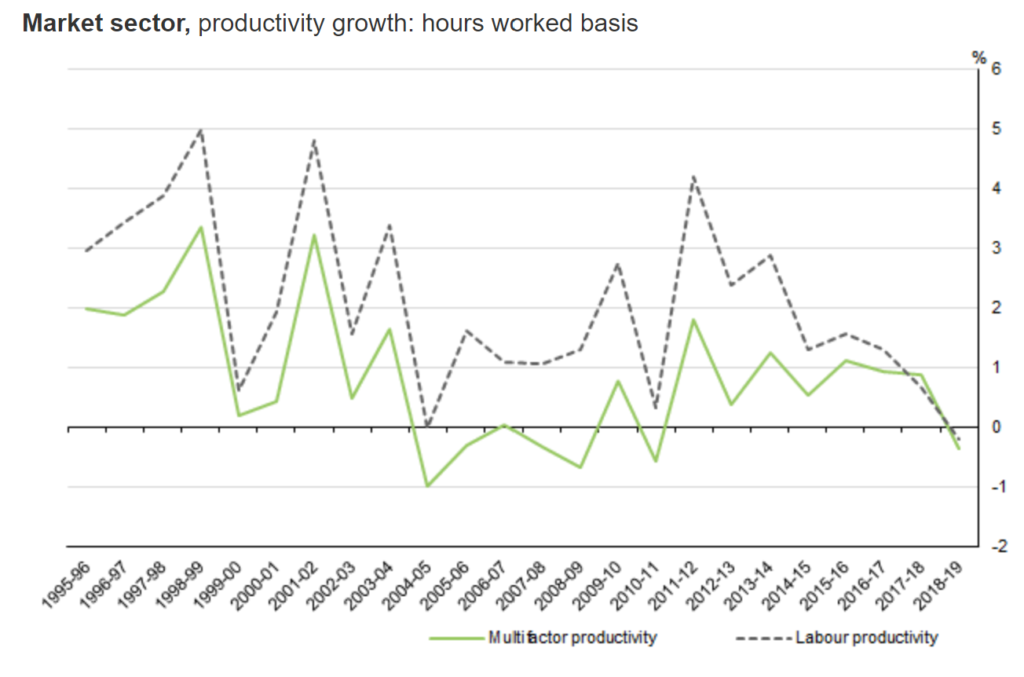
So how does this relate to innovation activity? Australia’s productivity commissioner Michael Brennan said in a December 2019 article in the Australian Financial Review that:
“Destructive rent seeking and a lack of entrepreneurship by business has stalled productivity and wage growth and that trying to fix the issue won’t be helped by reform nostalgia or economic pessimism.”
“It is likely that the bigger challenge for the Australian economy today is one of dynamism: the capacity to generate new ideas, products, business models, production techniques and diffuse them quickly through the economy.”
Innovation and entrepreneurship are important for overall economic resilience. How much more of a factor is this for areas outside of high population capital cities?
A regional perspective with the Progress in Australian Regions Yearbook 2017
Australia is a regional nation and a perspective on “the Australian economy” can be misleading. With a focus at a regional level, the Department of Infrastructure and Regional Development released the Progress in Australian Regions Yearbook 2017 that expands on the ABS MAP report.
Report indicators
The report utilises existing indicators from MAP:
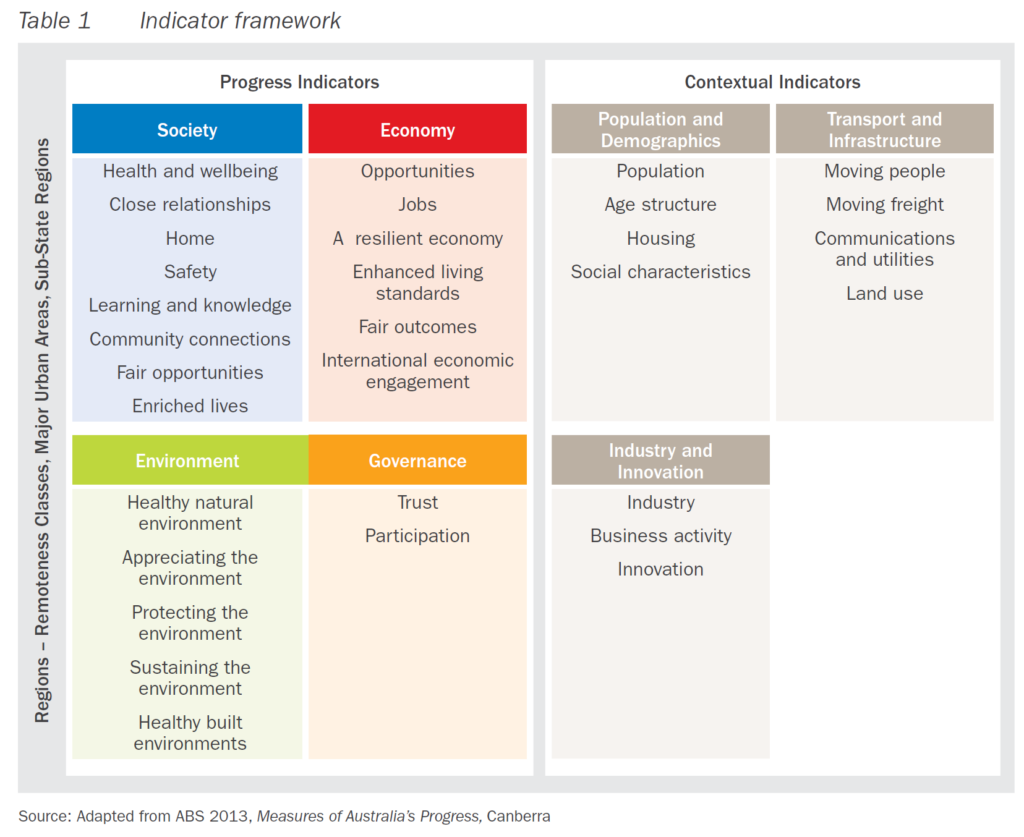
and expands with additional factors:
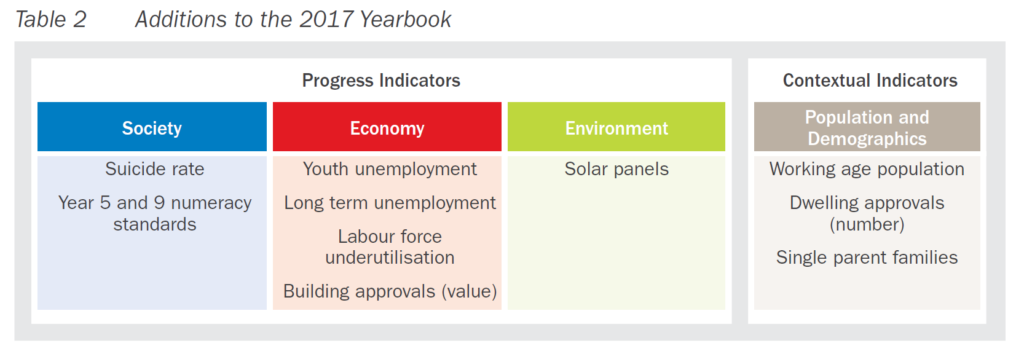
How the report sees a “region”
The term “regional” can be thrown around, but how it is defined is important based on the availability and meaning of the data. The report applied these indicators based on four ways of looking at a “region”:
First was a consideration of “Remoteness Class” based on five categories:
- Major cities of Australia;
- Inner regional Australia;
- Outer regional Australia;
- Remote Australia; and
- Very remote Australia.

Second was a list of “Major Urban Areas” identified as “the large urban cores and surrounding built‑up urban areas with a population of more than 85,000 residents.” This includes the seven capital cities and 13 ‘significant urban areas’.
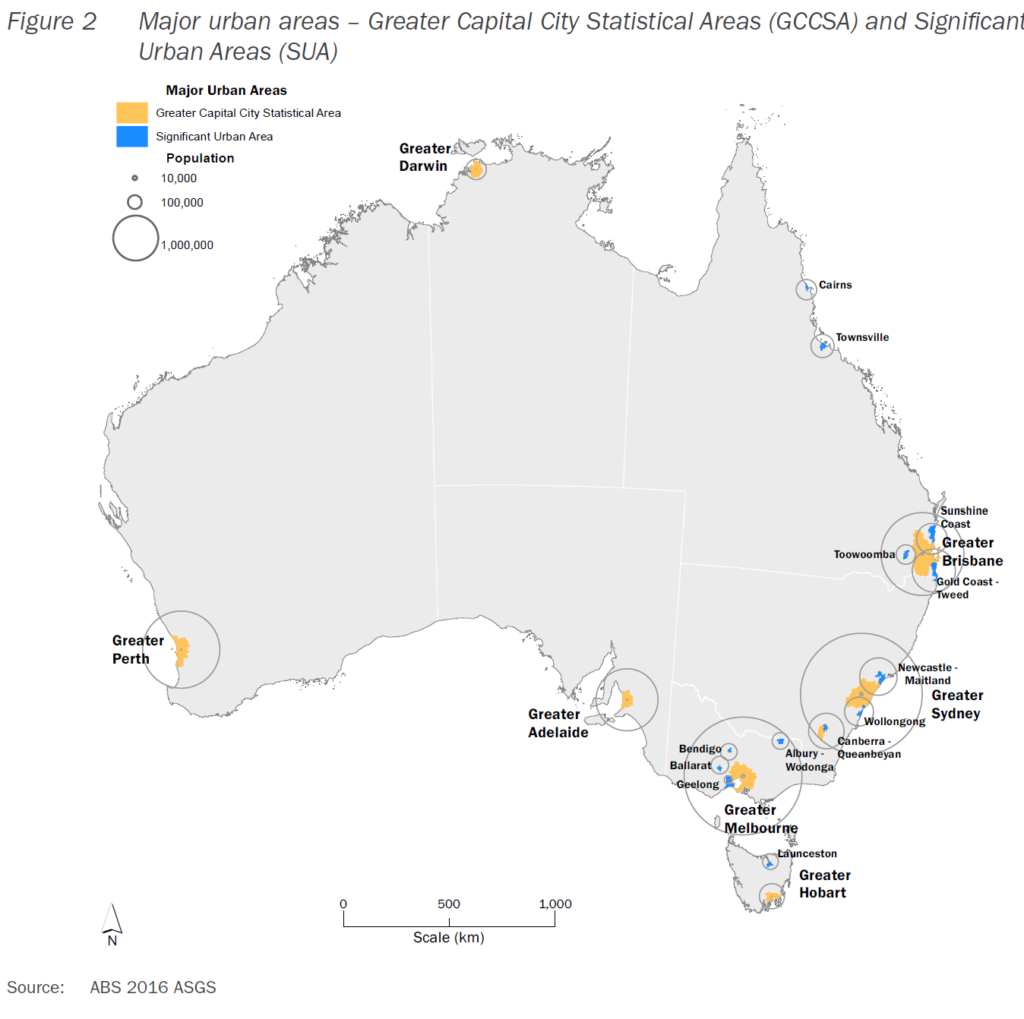
Third is “Capital City and Balance of State“. This is where data is not available at the detailed regional area so reporting appears as an example as:”Greater Brisbane” and “The rest of Queensland”.
Finally, there is reference to “Sub-State Regions” which are described as ‘a minimum population of 100,000, with some exceptions for sparsely populated remote areas.
Application of indicators in regions
The indicators are then applied in the regions using the different view of a region depending on data availability.
We are interested in entrepreneurship, so we will use as an example one of the economic indicators of new business entry rates.
First is the review based on remoteness class:

Second is based on major urban area:
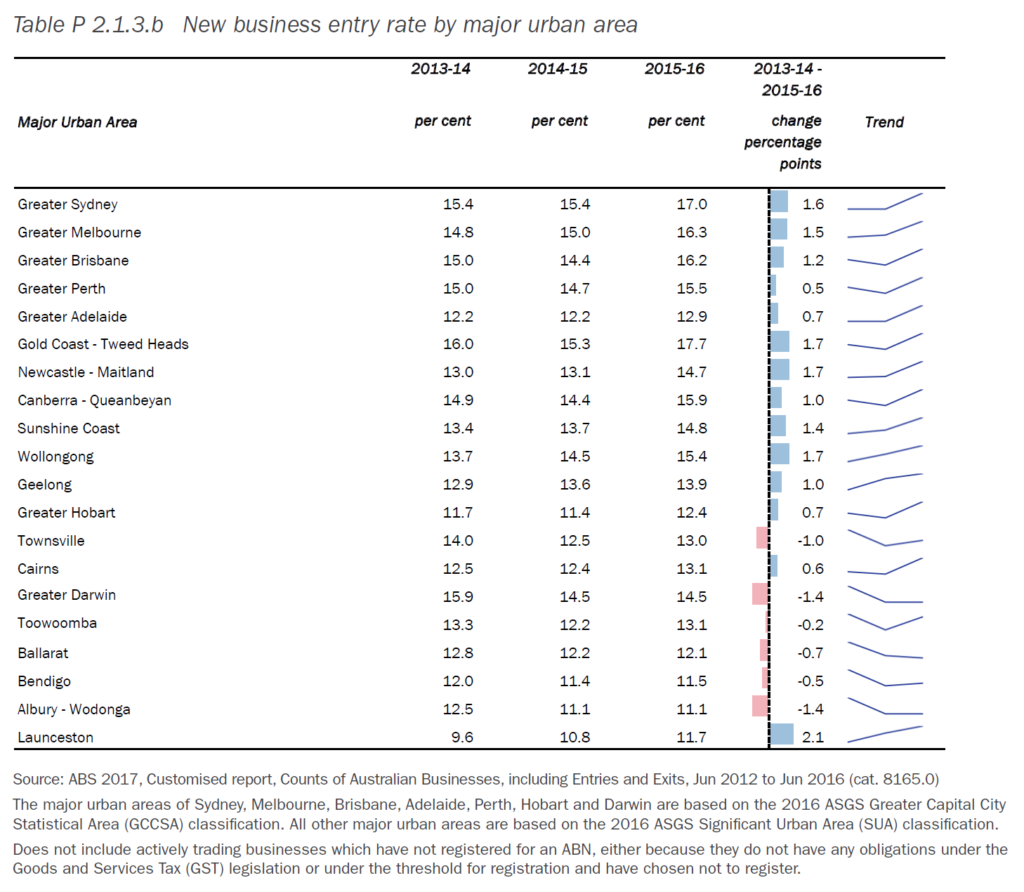
Finally is a detailed breakdown by sub-state region:

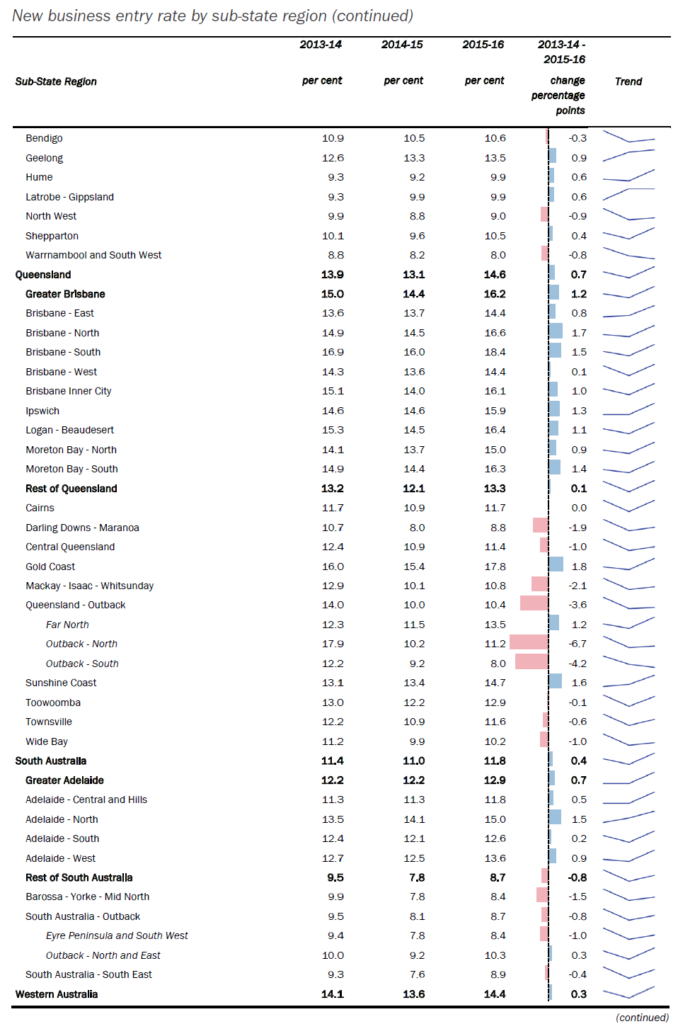
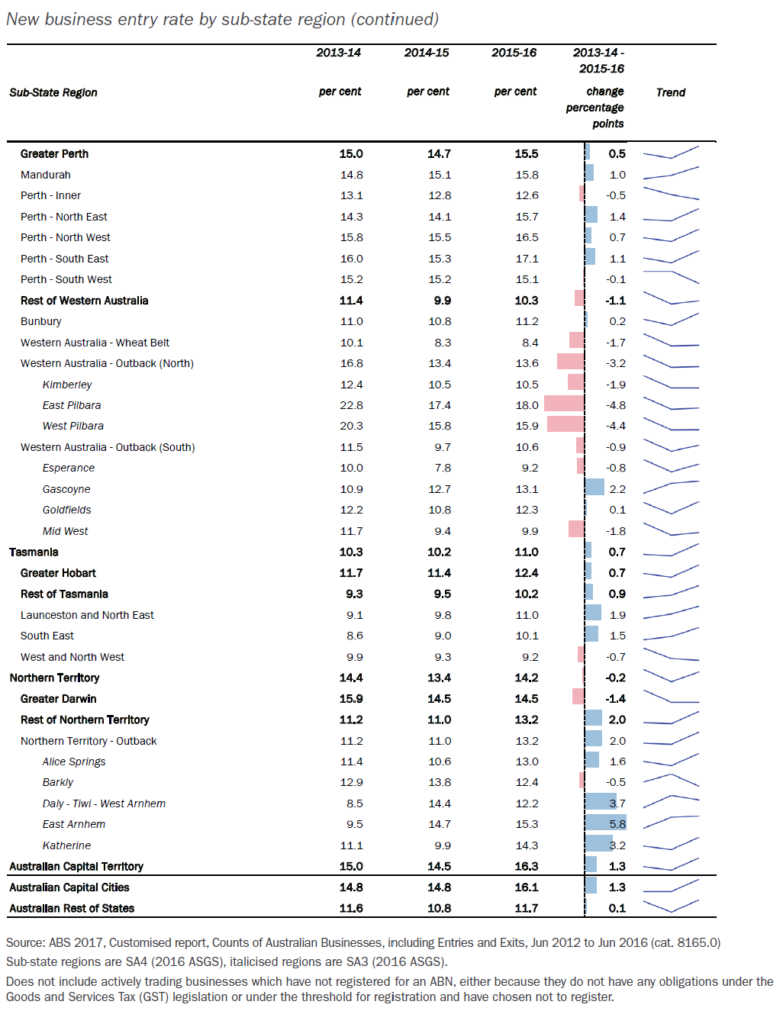
A broad brush can be applied to say that more businesses are created in higher populated areas. There are inherent factors such as regional areas experiencing higher structural change, lower population growth, less diverse industries, and lower diversity and therefor service redundancy.
But what we are looking for are variances to the trends, exemplars from which we can learn, and opportunities to embed new structures for greater resilience.
Closing thoughts – Getting better vs. Better than them
The focus of the two reports is to understand “Are we getting better”. The 2017 Yearbook stated that:
Rather than make comparisons between regions, the information on progress in this Yearbook is intended to be used to look at how individual regions are doing over time, and if these changes are in line with the broader national trend.
When thinking about the regional data, I wonder if there can be a tendency to change the question from “Are we getting better?” to instead “Are we better than them?“
Community transformation is complex and takes time. I am keen to continue exploring how we can learn from those who are doing it well and apply those lessons for the good of all.

1 thought on “Is life getting better? Measures of Australia’s Progress (2013) & Progress in Australian Regions (2017)”